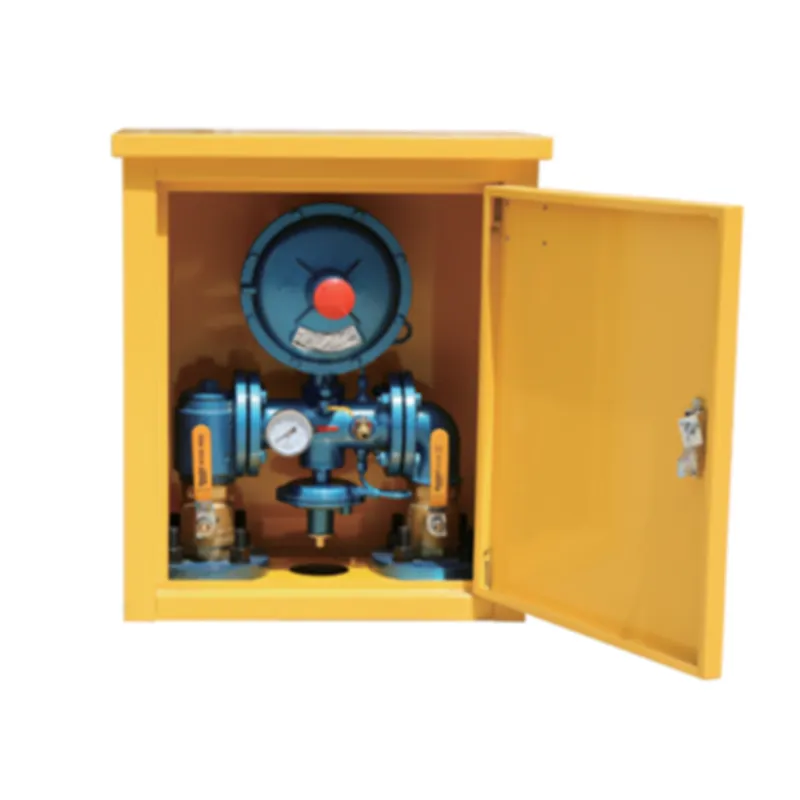
Nov . 25, 2024 15:16
Back to list
safety relief valve
Understanding Safety Relief Valves Ensuring Safety in Industrial Applications
Safety relief valves (SRVs) are critical components in various industrial systems, designed to protect equipment and personnel from the potentially dangerous consequences of overpressure. They act as a fail-safe mechanism that automatically relieves excess pressure from vessels, piping, and other systems that handle fluids and gases. This article explores the importance of safety relief valves, their operation, installation, maintenance, and applications in different industries.
The Importance of Safety Relief Valves
The primary function of safety relief valves is to prevent the catastrophic failures that can occur when pressure exceeds safe operating limits. These failures can lead to explosions, equipment damage, and leaks, posing risks to both human life and the environment. By ensuring that pressure levels remain within safe boundaries, SRVs play a vital role in maintaining the integrity of industrial operations.
In compliance with safety standards and regulations, such as those established by the American Society of Mechanical Engineers (ASME) and the Occupational Safety and Health Administration (OSHA), the installation of safety relief valves is often mandated in pressure vessels and systems. This not only protects machinery but also enhances worker safety, promoting a safer working environment.
How Safety Relief Valves Operate
Safety relief valves operate on a simple yet effective principle. They are typically spring-loaded devices that remain closed under normal operating conditions. When the pressure within a system rises to a pre-set level—known as the set pressure—the valve opens, allowing excess fluid or gas to escape. Once the pressure drops back to a safe level, the valve reseals itself, preventing any further loss.
There are two main types of safety relief valves safety valves and relief valves. Safety valves are primarily used for gases and have a rapid opening mechanism, ensuring quick pressure relief. In contrast, relief valves are designed for liquids and typically have a slower opening action to manage fluid and avoid sudden surges.
Installation Considerations
safety relief valve

Proper installation of safety relief valves is crucial for their effective operation. Factors such as valve sizing, orientation, and location must be considered to ensure optimal performance. A valve that is too small may not relieve pressure adequately, while one that is too large could lead to unnecessary loss of product. Additionally, SRVs should be installed in accessible locations to facilitate maintenance and inspection.
The correct orientation is also important, especially for liquid applications, where gravitational forces may affect valve performance. Manufacturers typically provide guidelines for installation to ensure that valves are mounted correctly, often recommending vertical orientation for most applications.
Maintenance and Testing
Regular maintenance and testing of safety relief valves are essential to ensure their reliability. Over time, debris, corrosion, and wear can affect a valve’s operation. Routine inspections should include checking for leaks, verifying the set pressure, and assessing the overall condition of the valve.
Testing the functionality of SRVs is equally important. This can involve routine operational tests, where the valve is opened under controlled conditions to ensure it functions correctly. Additionally, recalibration may be needed to adjust the set pressure in response to changes in system requirements or service conditions.
Applications Across Industries
Safety relief valves are used in a wide range of industries, including oil and gas, chemical processing, pharmaceuticals, food and beverage, and water treatment. In the oil and gas sector, SRVs protect pipelines and storage tanks from pressure surges that can occur during production and transportation. In chemical processing, they ensure that reactors operate within safe pressure limits, preventing hazardous reactions.
In conclusion, safety relief valves are indispensable components in modern industrial systems, providing a crucial layer of safety through pressure regulation. Their proper selection, installation, and maintenance are paramount for protecting equipment and human lives alike. As industries continue to evolve and expand, the importance of safety relief valves will remain a steadfast element in ensuring operational safety and efficiency.
Latest news
-
Safety Valve Spring-Loaded Design Overpressure ProtectionNewsJul.25,2025
-
Precision Voltage Regulator AC5 Accuracy Grade PerformanceNewsJul.25,2025
-
Natural Gas Pressure Regulating Skid Industrial Pipeline ApplicationsNewsJul.25,2025
-
Natural Gas Filter Stainless Steel Mesh Element DesignNewsJul.25,2025
-
Gas Pressure Regulator Valve Direct-Acting Spring-Loaded DesignNewsJul.25,2025
-
Decompression Equipment Multi-Stage Heat Exchange System DesignNewsJul.25,2025

